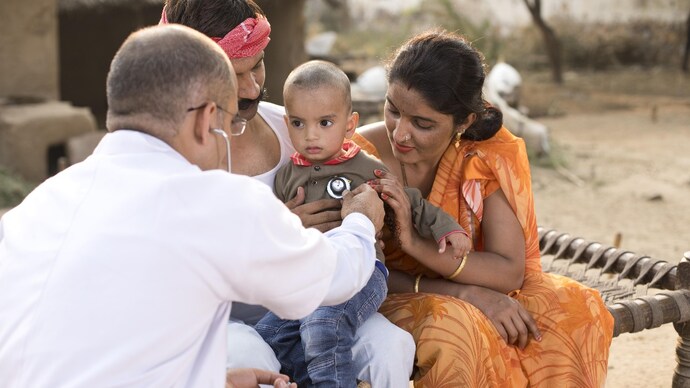Healthy development of more than 182 million children at risk due to lack of proper care: Lancet
A recent Lancet study highlights the child development crisis in low- and middle-income countries, focusing on lack of access to nutritional care and early childhood education.

Child development is a global crisis affecting many low- and middle-income countries. India, which falls in this category, is witnessing a rise in cases of obesity, malnutrition, genetic disorders and stunted growth in children.
While many factors cause this, a new Lancet study shows that about 182 million children in low- and middle-income countries, about three-quarters of whom are three or four years old, do not have access to adequate nutrition. Due to which healthy development is in danger.
An international team, including researchers from the Center for Chronic Disease Control (CCDC), New Delhi, said child development is also affected by air pollution, climate change and exposure to chemicals, which are emerging environmental risk factors.
The Lancet series highlights the importance of the “next 1,000 days”, the period between a child’s second and fifth birthday, as a critical stage for promoting nutritional care.
Building on the foundation laid during the first 1,000 days, this phase needs targeted attention, particularly in low- and middle-income countries (LMICs), where access to structured early childhood care and education (ECCE) is limited. Is.
According to the study, less than one in three children aged 3-4 in LMICs participate in early childhood care and education programs. Therefore, substantial investment is needed in this phase, prioritizing access to high quality ECCE programs with adequately trained teachers, manageable teacher-student ratios, evidence-based curriculum and a focus on play-based, child-centred learning. Doing is involved.
Dr. Aditi Roy, Senior Research Scientist, CCDC, said India faces significant challenges in providing equitable access to quality ECCE. “We need a holistic approach that gives priority to activity-based curriculum rather than rote learning, as recommended by the National Education Policy,” he told news agency PTI.
Comprehensive data on ECCE enrollment in India is lacking, and estimates often vary. According to a 2022 government task force report, about 28.6 million children aged 3-6 years were enrolled in ECCE under the Integrated Child Development Scheme (ICDS).
Meanwhile, the 2018 Annual Status of Education Report (ASER) survey conducted across 600 rural districts by non-profit organization Pratham found that preschool attendance increases with age, reaching 96% for six-year-olds.
However, Dr. Roy highlighted the irregular growth of private preschools, often referred to as “affordable primary schools,” and raised concerns about inconsistent quality.
He also said that the data collected during the National Family Health Survey-5 (2019-20) may not accurately reflect the current reality due to the disruptions caused by the COVID-19 pandemic.
An analysis of the Lancet series estimates that the cost of providing one year of ECCE to all children in LMICs would be less than 0.15% of their GDP, and the potential benefits would exceed the costs by 8–19 times.
“Children in LMICs need to be at the forefront of research and action during this critical phase,” said Katherine Draper, co-chair of the series and a researcher at the University of the Witwatersrand in South Africa. “High-quality ECCE programs are essential to support caregivers and ensure that children get the care they need to thrive.”
The series also highlights emerging environmental risks including air pollution, climate change and chemical exposure as barriers to healthy child development.
Dr. Roy pointed out that air pollution, especially in areas like Delhi-NCR, hinders education and directly affects physical development. Extreme weather events driven by climate change may further impact ECCE by threatening food and water security, mental health and infrastructure.
Despite these risks, the intersection of climate change and child development has not yet been addressed in policy discussions in India. “Climate action plans must integrate ECCE to mitigate these threats,” Dr Roy said.
To bridge these gaps, the authors advocate for scalable, high-quality ECCE programs that meet diverse needs while addressing emerging challenges such as environmental risks.







